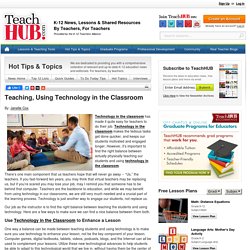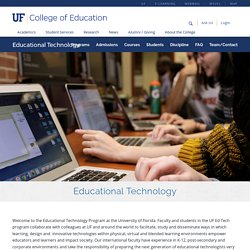

101 Web 2.0 Teaching Tools. Online tools and resources have made it easier for teachers to instruct students, and for students to collaborate with those teachers and with other students and parents.

These "Web 2.0" teaching tools aren't magical, but they may seem to defy definition at times since they save time, help you to stay organized, and often take up little space on a computer. Some of these applications are Web-based, which means that they can be accessed from any computer. The following list is filled with tools that will make a teacher's, or those enrolled in the best online education programs, life easier. The categories are listed in alphabetical order and the links to each tool are also listed alphabetically within those categories. Aggregators The following list includes free tools that you can use to stay on top of current events, including headlines and blogs. Aggie: Aggie is an open source news aggregator that's also a desktop application. Bookmark Managers. 25 Easy Ways to Use Technology in the Classroom. Although many technology-based teaching methods and resources effectively engage students and build their skills, many educators encounter difficulties when using technology in the classroom.
Maybe a specific platform is too hard to introduce. Or maybe it won’t run on your devices. Despite the challenges, you likely want to enjoy the benefits that education technology can deliver. Using the ones that best apply to you and your students, and keeping the condensed list on your desk for quick reference, consider these 25 easy ways to use technology in the classroom: Offering a Unique Learning Experience 1.
An ambitious way to use technology in the classroom, you can introduce a game-based learning platform. Most are designed to engage students, enlivening difficult topics and subjects. Prodigy is one, providing math content up to the 8th grade level that’s aligned with curricula across Canada, Australia, England and the United States. Create your free teacher account today! 2. Using Web 2.0 Tools in the Classroom. Chainarong06/Shutterstock As educators, the use of Web 2.0 tools is transforming our work, and more specifically the way we support students in the classroom.

As schools bring more technology into their classrooms, teachers will in turn strive to put more technology in their students’ hands. That is, if they are prepared to do so. Web 2.0 Tools are online software programs that allow users to do a number of different things. They can be used to teach curriculum content, store data, create/edit video, edit photos, collaborate and so much more. Teaching, Using Technology in the Classroom. Technology in the classroom has made it quite easy for teachers to do their job.

Technology in the classroom makes the tedious tasks get done quicker, and keeps our students motivated and engaged longer. However, it’s important to find the right balance between actually physically teaching our students and using technology in the classroom. There’s one main component that us teachers hope that will never go away -- “Us,” the teachers. If you fast-forward ten years, you may think that virtual teachers may be replacing us, but if you’re scared you may lose your job, may I remind you that someone has to be behind that computer.
Educational Technology and Mobile Learning. Resources Archives. Five Ways Teachers Can Use Technology to Help Students. Thomas Edison once said, “Books will soon be obsolete in the public schools…our school system will be completely changed inside of ten years.” Amazingly enough, however, one of our nation’s most important inventors was proven quite wrong. The American education system has a remarkable resistance to innovation and the classroom experience has changed very little in the 100 years since Edison’s prediction. Advances in information technology have revolutionized how people communicate and learn in nearly every aspect of modern life except for education. The education system operates under the antiquated needs of an agrarian and industrial America.
The short school day and the break in the summer were meant to allow children to work on family farms. California State University, Northridge. Educational Technology. Welcome to the Educational Technology Program at the University of Florida.

Faculty and students in the UF Ed Tech program collaborate with colleagues at UF and around the world to facilitate, study and disseminate ways in which learning, design and innovative technologies within physical, virtual and blended learning environments empower educators and learners and impact society. Our international faculty have experience in K-12, post-secondary and corporate environments and take the responsibility of preparing the next generation of educational technologists very seriously.
Technology in Education: An Overview. Published: February 5, 2016 In this 2015 photo, third grader Iyana Simmons works on a coding exercise at Michael Anderson School in Avondale, Ariz. —Nick Cote for Education Week Technology is everywhere in education: Public schools in the United States now provide at least one computer for every five students. They spend more than $3 billion per year on digital content. Led by the federal government, the country is in the midst of a massive effort to make affordable high-speed Internet and free online teaching resources available to even the most rural and remote schools.
To keep up with what’s changing (and what isn’t), observers must know where to look. There’s the booming ed-tech industry, with corporate titans and small startups alike vying for a slice of an $8 billion-plus yearly market for hardware and software. State and federal lawmakers, meanwhile, have wrestled in recent years with the reality that new technologies also present new challenges. What Is Personalized Learning? HOME.